 Last month, Marvel Comics made news with the announcement of plans to launch a series of Graphic Novels that would provide a modern re-telling of some of the publisher’s most popular titles by creative teams that were described by Marvel as “up and coming.” Unlike the Ultimate Universe, these were not re-inventions of the characters, rather just an updated version of their original origin stories. Marvel: Season One consists of original graphic novels featuring The Fantastic Four, Daredevil, The X-Men and Spider-Man, and beyond that, we weren’t given much information. Until today.
Last month, Marvel Comics made news with the announcement of plans to launch a series of Graphic Novels that would provide a modern re-telling of some of the publisher’s most popular titles by creative teams that were described by Marvel as “up and coming.” Unlike the Ultimate Universe, these were not re-inventions of the characters, rather just an updated version of their original origin stories. Marvel: Season One consists of original graphic novels featuring The Fantastic Four, Daredevil, The X-Men and Spider-Man, and beyond that, we weren’t given much information. Until today.
We got the opportunity to speak to Marvel Comics staffers Tom Brevoort, Executive Editor and Senior Vice President of Publishing, and David Gabriel, and Senior Vice President of Sales David Gabriel and ask them some of the pressing questions about Marvel: Season One.
iFanboy: In the past, when asked about Original Graphic Novels, Marvel has stated that publishing them didn’t make sense for them at the time. What has changed in Marvel’s publishing business to make OGNs a viable product?
Tom Brevoort: I’m unfortunately not going to be able to paint you an absolutely clear picture, as some of the information is still confidential. But, in essence, we’ve now got some new avenues into which to position this material that make releasing the books as OGNs rather than as serialized comics first viable to us, whereas previously this had not been the case. I can’t yet specify to you exactly what those new channels are, so I’m afraid you’re going to have to trust me on the fact that they exist. Rest assured, we would not be releasing these stories in this format if we didn’t think that it gave us the best possible chance for them to be successful and profitable. Our business is constantly evolving and changing, and we’re always on the lookout for new ways in which to introduce people to our stories and characters, and bring them into the fold.
iF: Did the reported success of Superman: Earth One from DC Comics have anything to do with the this decision?
TB: It wasn’t the prime motivator for doing these, no—I’m pretty sure we were underway with the Season One books before Superman: Earth One dropped. That said, the fact that Superman: Earth One was successful for DC is a good indicator that what we have planned for the Season One titles stands a strong chance of being successful as well. So it’s a nice indicator, but not at all the motivation for making these books or releasing them this way.
iF: Who is the intended audience for the Season One books?
TB: As with most of our Marvel projects, we try to build our stories in such a way that they can be read and appreciated by the widest audience possible, whether completely new readers, lapsed readers who had read our books at one time and somewhere along the line fell out of following then, and the core fans who pick up our stuff each and every week. That all having been said, we really are looking at the Season One projects as outreach books, stories that can introduce new fans to the Marvel Universe and these characters without any prior knowledge. But even given that, there are enough new wrinkles and revelations in these books so that even the most Handbook-steeped Marvelites will find the stories new and fresh and interesting.
iF: What sort of sales/marketing initiatives will be in place to attract new readers who don’t normally comics?
David Gabriel: We have an entire plan in place, and some still being developed in which there will be web banner ads, print ads, main stream PR pushes (some of which have already been seen), major play at New York Comic Con, there’s something special planned for Free Comic Book Day 2012. We’ll have free previews digitally and in print in stores and we are working with book stores to give these print previews away as well.
iF: With the recent demise of Borders, there’s a bit of fear around the book store market. Assuming these books are being positioned outside of the Direct Market, how do you feel about introducing this type of book to the book store market as it exists now?
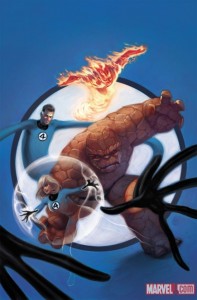 DG: I understand why you might make that assumption, but I want to be clear that the direct market is still our #1 source for getting this type of material out to all consumers. It’s up to us and our retail partners to work on methods of driving new faces into those stores. This content in every Season One story is what we believe is perfect for bringing new readers into both comics and comic stores.
DG: I understand why you might make that assumption, but I want to be clear that the direct market is still our #1 source for getting this type of material out to all consumers. It’s up to us and our retail partners to work on methods of driving new faces into those stores. This content in every Season One story is what we believe is perfect for bringing new readers into both comics and comic stores.
As far as book store markets go, while of course we are all dismayed at what has happened with Borders, keep in mind that there is still a vibrant market for graphic novels out in the world. The point here is to get fresh new content out there and work with those existing book market retailers to do what we can to make this as successful a launch as possible.
Don’t forget, the fans are still out there, the readers and consumers still exist. They will find places to go and our job is to now get these titles into as many outlets as possible so they have the widest selection.
iF: Will these books be available digitally?
DG: That’s something that is still being discussed. So look for further developments on that front. There will certainly be digital previews available through as many devices as we can possibly get this on!
iF: We haven’t seen details about the book like page count etc. How big are these stories going to be?
TB: Each Season One book is about 100 pages in length, give or take a page here or there.
iF: What will be the format of each book? Will they feature a single, three act story structure or more like a collection of episodic adventures?
TB: Each Season One book tells a specific story about the earliest days of these characters in their superhuman identities, but each one is a little bit different. So some of them do jump around from moment to moment, incident to incident more than others, which are more focused on a single set of events. In other words, the timespan over which each Season One story takes place differs depending on the story. Some of them take place over the course of weeks, during which time the character involved might have three adventures that either are united by a common theme or have a common through line. In others, there might really be a single large adventure. Probably the best example of the way these will work would be to point you at the Jeph Loeb/Tim Sale “color” books: Daredevil Yellow Spider-Man Blue and Hulk Grey. As in those projects, the heroes may face a couple of different villains, but the central story will still be one with a beginning, middle and end.
iF: What was the process in selecting these 4 characters and creative teams to launch with?
TB: For the characters, we were looking for quintessential Marvel properties that go all the way back to the bedrock titles introduced by Stan and company at the beginning of the Marvel revolution. And in terms of the creative teams, especially the writers, we tried to get creators who were younger up-and-comers, and who would hopefully bring a more modern perspective to these classic stories.
 iF: You’ve made it clear that this is not a re-imagining of these characters like the Ultimate universe, that these are modern retelling of the origins, how challenging is it to balance that line? Do the stories take place in he 1960s or in a vague sense of “today”?
iF: You’ve made it clear that this is not a re-imagining of these characters like the Ultimate universe, that these are modern retelling of the origins, how challenging is it to balance that line? Do the stories take place in he 1960s or in a vague sense of “today”?
TB: We’ve definitely updated the stories in terms of elements like the wardrobes, and the fact that people in 2011 carry cell phones and such, so to that degree they’re modern retellings. But we’re trying to maintain as much of the classic storylines as possible. This isn’t really a sea change, it’s very much what we did in Iron Man when Warren Ellis wrote Extremis, and set Tony Stark’s origin not in Vietnam by Afghanistan. Same sort of thing.
Also, because this has been misreported a couple of places, let me be very clear that these stories aren’t simply origin tales. The origins of all of the characters will be included, as these are introductory volumes, but they’re not really the spine of the stories we’re telling here. Spider-Man: Season One, for example, is much more about Spidey encountering his first super-powered foe, the Vulture, than it is about the particulars of his origin, which are well known to most prospective readers.
iF: Will the end of the books feature any sort of “Now go check out…” suggestions for readers who enjoyed what they just read?
TB: Probably somewhat. It’s still a little bit premature, in that we’re still finalizing the physical package on these books. What’s paramount is that each one is a complete unit in and of itself. But if a reader liked Fantastic Four: Season One, we might steer him towards other appropriate Fantastic Four collections.
iF: Tom, you mentioned in USA Today that there will be a second wave of OGNs, what is the model moving forward? New characters & creative teams? Or will we get a “Season 2” for the 4 characters at launch?
TB: The second flight we’ve begun working on now will be different characters and new creative teams. But that doesn’t say that we couldn’t circle back around at some point and do Season Twos for any of these existing releases.
Check out the covers and preview artwork from the Marvel: Series One line of graphic novels:


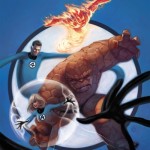
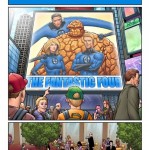

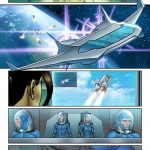
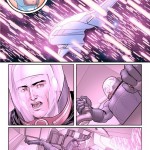
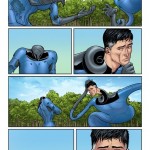

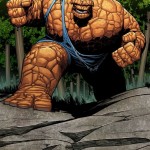






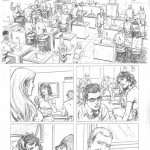

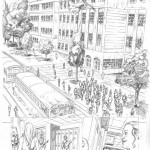
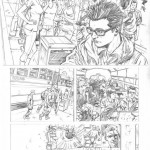

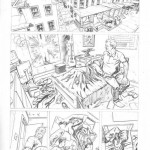





I wasn’t aware of these. Do we have information about the creative teams?
They were announced a while back, but the Ifanboy articles don’t seem to work when I look them up, so here:
http://marvel.com/news/story/16362/marvel_season_one
We added links to our previous coverage of these – just look under Related Posts, above the comments
Thank you both.
I feel like these books would be a good fit in non-bookstores that sell books like Target or Wal-Mart. Every so often I’ve seen trades sold in these stores. Earlier in the summer when the movies were coming out, I remember seeing Green Lantern: Secret Origins and a volume of X-Men: First in these stores and I thought that was a really good idea. The Season One books seem like they could work in a similar way.
This actually raises a question for me: why does Daredevil’s costume have eye holes if he’s blind?
The costume has false eyes. It would be suspicious if he didn’t have eyes. It’d Narrow down the list of potential secret identities to blind, athletic people.
I’m kinda looking forward to the X-men one.
Definitely picking up Spidey (a BIG plus is Cullen Bunn writing it).
The rest look good too, but it’ll depend on the pricepoint if I pick up the rest.
Exellent intreview! Sharp and to the point. Exactly what i want it to be ask.